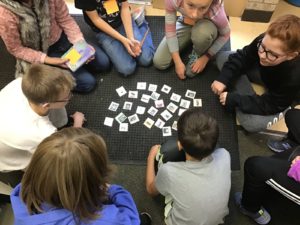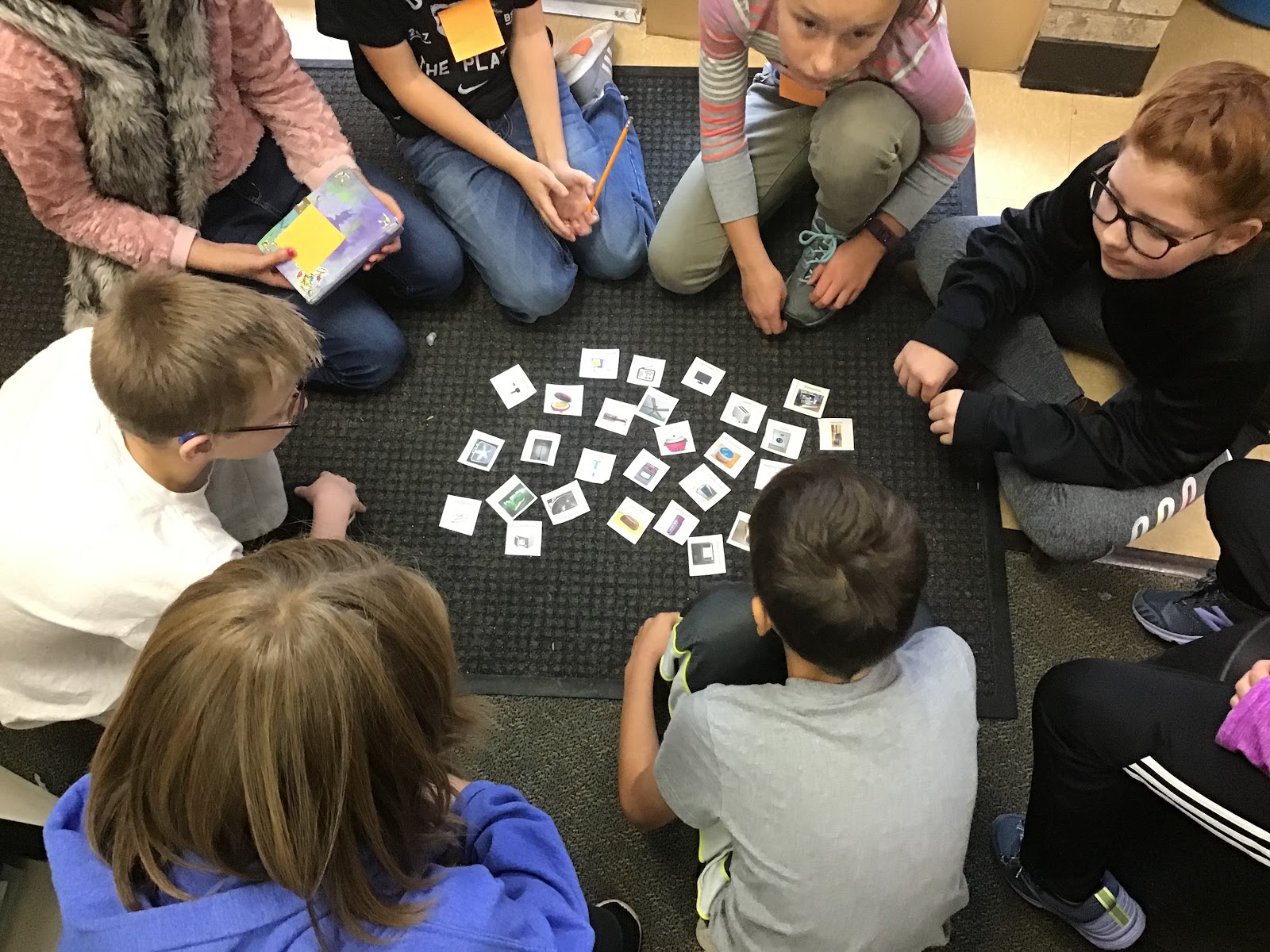The Van Andel Education Institute strives to be a place where teachers of all backgrounds are recognized and empowered. Last month, we began highlighting exceptional educators who are working to foster an environment of curiosity, collaboration, and creativity within their schools. You’ll hear from them about the latest challenges facing students today, and discover what methods they use to encourage growth and ingenuity within their classroom. Today’s featured teacher is Paul Yenne, a 5th grade teacher from Colorado Springs and the lead author of the inquiry-based High Energy project.
Paul started his career as a Special Education paraprofessional and served in that position for five years. Paul took to education so much that he finished his degree and entered the classroom, where he began channeling his passion into creating an engaging and relationship-driven learning environment. His goal is for children everywhere to discover a sense of independence and self-directed learning.
Why did you get involved in education?
I have always had a passion for learning, but never had a passion for playing the game of school. I was inspired by the many teachers I was lucky to have who recognized my strengths and bent over backwards to make my educational experience a positive one. They valued my unique ways of demonstrating growth over the (lack of completed) homework. I want to share that love of learning and passion for discovery while providing engaging and meaningful activities that motivate all students to find their way to share their development.
What do you believe are the greatest challenges facing teachers today?
The two that spring to mind immediately are inequity of resources and lack of support.
I am lucky enough to be in a school where my students have one to one iPads, a brand new playground, and an abundance of support both here at school and at home. However, I have worked at and am still friends with schools who still share computer carts with outdated computers, deteriorating facilities, and almost no parental support. We have a system where it feels to many that the rich get richer while schools with struggling test scores (often schools with high poverty) get their resources pulled or diverted away from the kind of learning and access to tools that high performing school get, sometimes in the same district.
When it comes to feeling supported, I am again lucky to be in a building and a district where I feel valued as a professional and as a public educator. I know many people are in situations where that is not the case and in fact feel undermined. But I think all public educators feel a lack of support at some level, be it the district, the state or the federal level. It often can feel, listening to the national conversation about education, that teachers’ voices are not valued in the conversation about what needs to change in education, which results in mandates and assessments that don’t match up with or conflict with the needs of students in the classroom.
What do you believe are the greatest challenges facing students today?
The biggest challenge I see for a lot of the students I have worked with is a lack of resilience, and from talking to more veteran teachers, it seems to be on the increase. When a problem gets too hard, or they feel a sense of failure, it leads to a shutdown since no one will come to their rescue. I think that makes it all the more critical to give them tasks that force them to work through disappointment, because the end goal is appealing enough that they won’t want to let failure get in the way.
What tools have you found most useful for inspiring students to think critically and creatively?
Our school this year got a class set of Spero Bolt robots and designing and working on challenges with the students along with our LTE has been incredible. It has forced kids to work through issues and to think outside of what they think the obvious answer is.
While I use a lot of tech tools in my classroom, I would say the biggest resource in my first year for helping me find ways to get kids creative and critically thinking have been other teachers. Twitter has been an invaluable resource for me as well as all the wonderful teachers in my building and that I met working in other schools, as well as a mom who amazingly works in the same district teaching the same grade (Hi, mom!).
How would you like to see education change in the next ten years?
I would love to see the focus shift (and I think it is shifting) to giving students the tools and the agency to solve problems, instead of focusing on the content itself. That’s not to say that the content is unimportant, but in an era where all information can be accessed in seconds, the process becomes a more valuable tool than the information. This also allows for more student choice, which creates buy-in for the students and as they approach the end of high school, hopefully that choice has allowed them to experience some different opportunities that guide their decision making onto the next step, be it college or a career.
How can parents assist students in developing curiosity and iterative thinking?
Read. Read to your student, read alongside your student, have your student read to you and read your own things in the presence of your student. Make reading a part of what you do and show them that reading is positive and enjoyable. Instead of giving kids the answers and solutions to problems, giving them the tools to safely look for and seek answers and solutions (and to fail at finding them), and then being a voice for feedback and reflection.
What are you passionate about?
I am passionate about starting my career and working towards being the best teacher I can be. Reflecting on the struggles of the job is a privilege and not a chore because I know I am doing what I love and what I was meant to be doing. I am passionate about giving students a voice in their learning and in their world. We tend to forget that kids are capable of making thoughtful decisions or figuring out how to solve their own problems. But by putting our faith in them to make their own way, even if it’s scary (for us and them) they will so often rise to the occasion.
What do you wish for each student?
My dream is for every student to find their passion, the thing that is so important to them that there is no obstacle that can deter them from reaching their goal. I want every student to know that they are capable of greatness, even when it doesn’t feel like it. I want every student to feel honored and respected for who they are.

“My kids loved it. I enjoyed teaching it. It was just a really cool experience and I know your kids will enjoy it as well!” – Paul Yenne on High Energy
Energy is expensive. Plus, using too much energy is really bad for the planet. Today, let’s start to help the planet and your school’s wallet with High Energy, a project in which students conduct an energy audit of the school, then design, test, refine, and share solutions to reduce energy consumption. The project culminates in a pitch to stakeholders regarding the costs and benefits of the solutions students discover.
Interested in learning how you can better impact the lives of students? Check out our webpage and stay tuned to meet more dynamic teachers!

